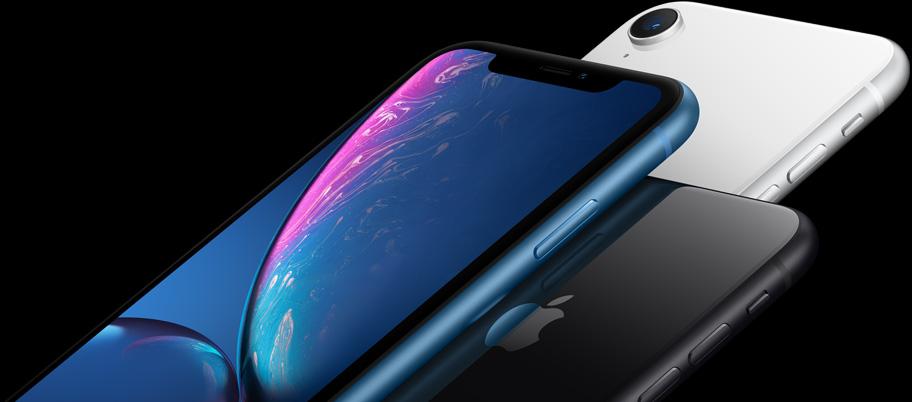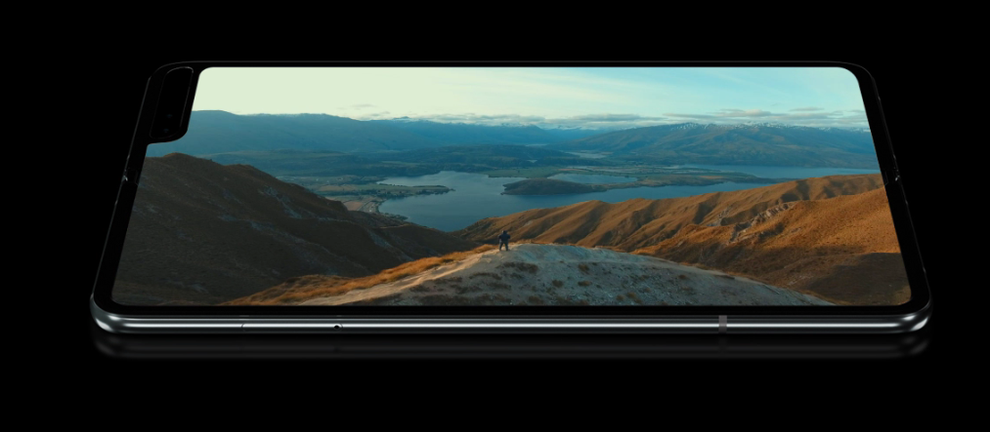 Credit: Dreamstime: Yalcinsonat
Credit: Dreamstime: Yalcinsonat
Over the last few years, the inclusion of notched displays have become a dominant but divisive trend in the world of modern smartphone design.
Some love the notch. Others hate it. Nevertheless, if you’re confused about why notches are a thing at all, here’s a quick primer on everything you need to know about smartphone notches.
What is a notched display?
 Credit: Apple
Credit: Apple The term notched display refers to a smartphone screen that features an irregular shape due to a cutout on one of the device’s edges (usually the uppermost one) rather than a regular, rectangular screen.
Though the exact purpose of each notch is different, display cutouts are often used to house sensors, speakers and front-facing camera modules.
Where did the first notched display come from?
Although Apple’s iPhone X served to popularize the notched display, Essential’s PH-1 smartphone was the first notable device to incorporate a notched display.
 Credit: Essential
Credit: Essential The Essential PH-1 was announced in May 2017 and released in August 2017 to mixed reviews. The iPhone X wasn’t officially announced until September and featured a slightly wider notch design. Nevertheless, many credit Apple with popularizing notched displays.
Why do modern smartphones have notches?
Opting for a notched display is a design choice that allows manufacturers to achieve a higher screen-to-body ratio, smaller physical form-factor and offer the user more screen space by migrating the Android status bar into the screen space surrounding the notch.
 Credit: Samsung
Credit: Samsung The case for an against the notch can be best seen in the differences between the Infinity Display found in Samsung’s Galaxy S8 and Apple’s iPhone XR’s Liquid Retina Display.
When combined with thin bezels and curved displays, notches allow for new smartphone designs that come closer to a sort of all-screen ideal that can be applied as an advantage over the competition.
The actual real-world benefits of smartphone notches are slim. A phone with a notch doesn't feel terribly better or different to one without a display cutout. Nevertheless, if you’re marketing or looking for a point of difference between one product and the competition, it’s easy to see (and sell) more screen space as better than less screen space.
 Credit: Apple
Credit: Apple The catch here is that there's always going to be a chance that the app you're running on your device might not have been optimised for notched displays. This can lead to frustrating situations where you can’t access part of a critical part of the screen due to the positioning of the cutout.
To try and reduce these problems, Google introduced several new rules for Android developers in 2018. They mandate that a single edge can contain at most one cutout and a maximum of two cutouts total. They also ask that cutouts not be placed on the longer edges of the display.
The implementation of these guidelines has reduced some of the growing pains around notched displays but not eliminated them outright.
What Kinds of Notch Are There?
“The Wedge”
 Credit: Apple
Credit: Apple Though it wasn’t technically the first notched smartphone display to hit the market, the wedge-like notch found in the iPhone X and subsequent Apple devices was the first such screen to break into the popular consciousness. It's by far the most well-known type of notched display out there. When people think smartphone notch, they're usually thinking of this specific take on the formula.
Looking beyond the most-recent run of iPhones, the wedge notch can even be found in the world of Android through devices like LG’s G7 ThinQ and Huawei’s P20 Pro.
“The Teardrop”
 Credit: Huawei
Credit: Huawei After matching the notch design of Apple’s iPhone X hardware, many Android manufacturers saw an opportunity to further improve the screen-to-body ratio of their notched displays by cutting things further down to match - eventually ending up with the same ‘teardrop’ style cutout found in the Essential phone.
As with all notched displays, the advantage of a teardrop versus a wedge is that you’re getting slightly more screen space. However, opting for a teardrop display can sometimes lead to compromises on the front-facing camera. For example, Huawei’s Mate 20 features this design but loses the 3D Face Unlock found in the Mate 20 Pro as a result.
“The Side-Notch”
 Credit: Samsung
Credit: Samsung Following the development of phones featuring a teardrop notch, a prototype for a 5G Samsung smartphone appeared featuring a notch on the upper-right corner of the screen.
Though you'd think the outspoken reaction from notch-haters online might have deterred the company from embracing this particular layout, Samsung went ahead and put the world's first "Side-Notch" on the internal display of their first Galaxy Fold device.
“The Double Notch”
 Credit: Sharp
Credit: Sharp Though there’s not a huge amount of practical reasons to do so, some vendors have even opted to include not one but two notches on their smartphones.
For obvious reasons, the amount of manufacturers embracing the concept of a double notch isn’t huge. This is mostly because the benefits of doing so aren’t super-clear. There was the Sharp’s Aquos R Compact, which used the lower-notch housed a traditional haptic fingerprint sensor.
As with all notches, it’s very case by case. Time will tell whether the argument for two notches can hold up to the scrutiny of everyday consumers or whether manufacturers will be able to minimise the tech involved to such a degree that the double notch becomes a thing of the past.
“The Hole”
 Credit: Huawei
Credit: Huawei From 2019, smartphone manufacturers have seemingly settled on a new form of notched display that some call “the hole-punched display”, “circular cutout display” or “hole-display”. Regretfully, some manufacturers refer to this design as the 'dotch'.
Seen above, this type of notched display migrates the teardrop notch to the left or right of the display.
Whether or not this notch will prove successful remains to be seen. Like all notches, it presents new challenges for software developers. However, if a device’s screen-to-body ratio is paramount, those challenges are likely to be seen as worth surmounting by manufacturers.
After all, this desire to push for smaller and smaller devices with bigger and bigger screen is what got us to today’s landscape of notched displays.
The Future
The question of whether notches are here to stay and, if not, what a future without them might look like can be answered in a single phrase: under-display camera modules.
 Credit: Oppo
Credit: Oppo Similar to the in-display fingerprint sensors that have become a standard among Android devices in recent years, under-display camera modules promise to allow manufacturers to squeeze the front-facing camera underneath the screen itself.
Though early iterations of the under-display camera are likely to come with caveats when it comes to quality, this seems like a technology that is naturally going to replace most smartphone notches over time.
How far have manufacturers got?
The concept of under-display cameras is nothing new. In February 2020, Chinese smartphone manufacturer Xiaomi filed a patent for an under-screen smartphone camera that can rotate, thereby allowing it to be used as both a front-facing as well as a rear-facing camera.
However, the first smartphone to actually achieve the under-display camera, the ZTE Axon 20 5G, was released in China in January 2021. ZTE also released the Axon 20 5G in Australia, the US and the UK. The phone features a large 6.92-inch OLED Full HD display and a 90Hz refresh rate.
Although the ZTE Axon 20 5G was well received, some reviewers commented that the quality of its cameras was less than that of some premium smartphones on the market. However, a successor also sporting an under-screen camera has arrived in the newly released, ZTE Axon 30 5G. This handset promises a number of improvements over the ZTE Axon 20 5G, including a higher pixel density (400PPI to the Axon 20's 388PPI) that could make a difference to image quality.
 Credit: ZTE
Credit: ZTE Earlier this year Samsung released the Galaxy Z Fold3, another device with a selfie camera that doesn't require a notch or hole punch. This feature is essentially crucial to the phone's design; by using a camera under the phone's display, there's nothing to interrupt its generously-sized folding display.
 Credit: Samsung
Credit: Samsung Google has also been quick to find a concept for under-display camera technology and they seem intent on improving the technology. In September last year they filed a patent for a "full-screen display with a sub-display camera." This new concept proposes an under-screen front-facing camera with an extra OLED panel featuring the same pixel density as the main display.
Google's under-screen camera concept relies on a rotating prism. When the phone is not in use, the prism reflects the second OLED screen on the main display. However, when the user wants to take photos or videos, the prism rotates to allow light to enter it.
When we will see Google's patent technology in a Google handset is hard to say. We think it could arrive in time for the Google Pixel 7, since the Google Pixel 6 has recently been released, and it sports a hole-punch for its front-facing camera.
Leaked iPhone renders also suggest Apple might lose the traditional notch in its next-generation iPhone 14, possibly opting for two holes positioned at the top of the screen, a pill shaped one and round one. But this is still speculation and hasn't been confirmed.
Whether or not manufacturers will continue to design smartphones with notches, we can't say for certain. But while they're still here, they will continue to be a smartphone's most defining feature.
















